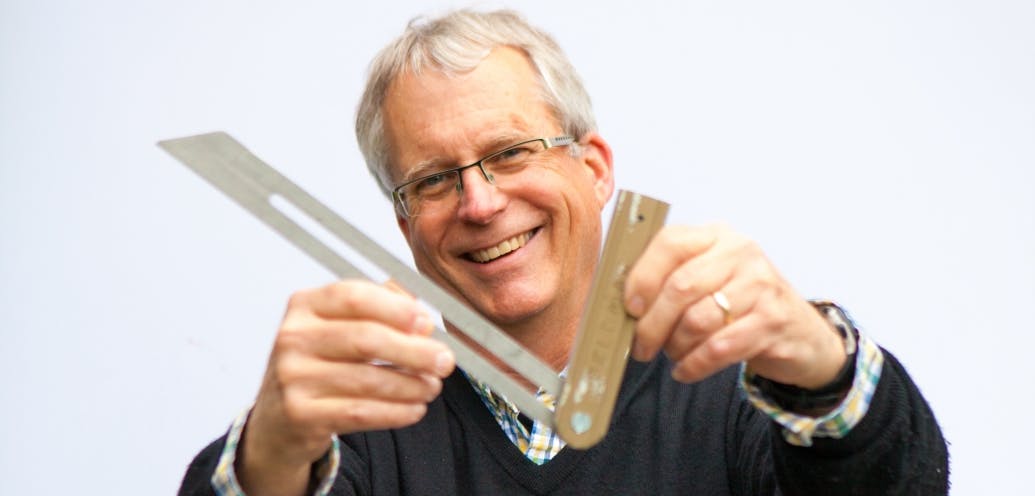
At Seattle Pacific University, we have 214 full-time faculty members who are scholars and experts in their respective fields. Get to know Professor of Art Roger Feldman, who retired in 2017, and has created interactive installation art around the globe.
Q: You’re known for your art installations. What led you to that medium?
When I went to graduate school, I was a painter. Then I took a course where you couldn’t make art with art materials. You could use light, space, sound, kinesthetic perception. It was an “aha” experience. I realized I used my entire body, not just vision, to make a statement. You weren’t just seeing something, you were doing it.
Tell us about the art installation you created near a Scottish castle.
It’s called echo, but we spelled it in Norwegian, so it’s ekko. This castle was built [in Scotland] in 1100 by the [Norwegian] vikings. It’s a spiral. In Celtic tradition, a spiral is a connection to infinity and to spiritual reality.
It’s 8’4″ high, but when you’re inside of it, because of the spiral, you can hear the roar of the ocean from over 100 feet away. It’s constantly windy, but this blocks out the wind. It’s a still point, in the midst of chaos. Those are spiritual connections with the site.
How does your Christian faith influence your work?
I went to seminary for a year. I did paintings while processing what I was learning theologically. Most of my work comes from a theological core. You’ll find themes that resonate with Biblical principles, and sometimes specific Scriptures.
How are students involved with installation art?
In my sculpture class, we make pieces and then install them in Kruckeberg Botanic Gardens. They’re typically up from May to October, and thousands of people come to the park.
How do you prepare students for careers after graduation?
In our Art Foundations courses, we invite at least three guest speakers from different realms in the arts. As a freshman, students are being exposed to “How can I get a job when I leave here?” They see their options. Then, internships are a way of testing the waters, of saying, “Do I really want to do this?” You get to see what it’s really like.
How is SPU connected with the American Institute of Graphic Artists (AIGA)?
We have the strongest student chapter in the Pacific Northwest. This spring, our students organized and hosted a portfolio review. Eighty professional designers from the larger Seattle area came to SPU to look at portfolios of students from across the state. Through AIGA, we get to visit design firms and see what it’s like to work in downtown Seattle.
What sort of careers do students have after graduation?
We’ve had four students at the firm that designed Starbucks. There are also ministry opportunities for visual communications and photography. Ministry is an option for organizations that need to have their stories told. Our students have gone to World Vision, and to World Concern, just to name a few.




